All Exams >
Civil Engineering (CE) >
Engineering Mathematics >
All Questions
All questions of Calculus for Civil Engineering (CE) Exam
Minimum of the real valued function f(x) = (x-1)2/3 occurs at x equal to- a)- ∝
- b)0
- c)1
- d)∝
Correct answer is option 'C'. Can you explain this answer?
Minimum of the real valued function f(x) = (x-1)2/3 occurs at x equal to
a)
- ∝
b)
0
c)
1
d)
∝
|
|
Kunal Gupta answered |

As f(x) is square of hence its minimum value be 0 where at x = 1.

- a)∞
- b)2
- c)0
- d)1
Correct answer is option 'C'. Can you explain this answer?
a)
∞
b)
2
c)
0
d)
1
|
|
Yash Patel answered |
the squeeze theorem for this. Recall that sinx is only defined on −1≤sinx≤1. Therefore

Consider the following two statements about the function f(x) = |x| P: f(x) is continuous for all real values of x Q: f(x) is differentiable for all real values of x Which of the f oll owi ng is TRU E? - a)P is true and Q is false
- b)P is false and Q is true
- c)Both P and Q are true
- d)Both P and Q are false
Correct answer is option 'A'. Can you explain this answer?
Consider the following two statements about the function f(x) = |x|
P: f(x) is continuous for all real values of x
Q: f(x) is differentiable for all real values of x
Which of the f oll owi ng is TRU E?
a)
P is true and Q is false
b)
P is false and Q is true
c)
Both P and Q are true
d)
Both P and Q are false
|
|
Avinash Sharma answered |
The graph of f(x) is
f(x) is continuous for all real values of x Lim |x| = Lim |x| = 0
as can be seen from graph of |x|.
and Lim f(x) = +1 as can be seen from graph of |x|
x → 0+
Left deriva tive ≠ Rig ht derivative
So |x| is continuous but not differentiable at x = 0.
How many points c∈[0, 16x] exist, such that f'(c) = 1- a)256
- b)512
- c)16
- d)0
Correct answer is option 'A'. Can you explain this answer?
How many points c∈[0, 16x] exist, such that f'(c) = 1
a)
256
b)
512
c)
16
d)
0
|
|
Ananya Kumari answered |
How many point c € [0, 16x ] exist , such face 1
256 ans
256 ans
The minimum point of the function f(x) = (x2/3) – x is at - a) x = 1
- b)x = -1
- c) x = 0
- d)x = 1/√3
Correct answer is option 'A'. Can you explain this answer?
The minimum point of the function f(x) = (x2/3) – x is at
a)
x = 1
b)
x = -1
c)
x = 0
d)
x = 1/√3
|
|
Avinash Sharma answered |
Correct Answer :- a
Explanation : f(x) = (x^2/3) - x
f'(x) = 2/3(x-1/2) - 1
f"(x) = -1/3(x-3/2)
For critical points. f′(x)=0
=> 2/3(x-1/2) - 1 = 0
f has minimum value of x = 1
Consider the function f(x) = |x|3, where x is real... more. Then the function f(x) at x = 0 isa)Continuous but not differentiable
b)Once differentiable but not twice
c)Twice differentiable but not thrice
d)Thrice differentiable
Correct answer is option 'C'. Can you explain this answer?
|
|
Diya Mukherjee answered |
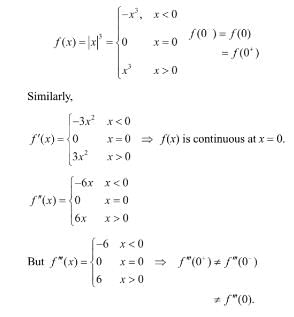
Suppose C is the closed curve defined as the circle x2 + y2 = 1 with C oriented anti-clockwise. The value of ∮(xy2dx + x2ydy) over the curve C equals ________
Correct answer is between '-0.03,0.03'. Can you explain this answer?
Suppose C is the closed curve defined as the circle x2 + y2 = 1 with C oriented anti-clockwise. The value of ∮(xy2dx + x2ydy) over the curve C equals ________

|
Engineers Adda answered |
Concept:
Green’s theorem:
Let R be a closed bounded region in the xy plane whose boundary C consists of finitely many
smooth curves.
Let F1(x, y) & F(x, y) be functions that are continuous and have continuous partial
derivatives
∂F1 / ∂y and ∂F2 / ∂x. Then
∂F1 / ∂y and ∂F2 / ∂x. Then

Analysis:
Given curve C: x2 + y2 = 1

= 0
Using Cauchy’s integral theorem, the value of the integral (integration being taken in counter clockwise direction) 
- a)

- b)

- c)

- d)1
Correct answer is option 'A'. Can you explain this answer?
Using Cauchy’s integral theorem, the value of the integral (integration being taken in counter clockwise direction) 
a)
b)
c)
d)
1
|
|
Yash Patel answered |
Here f (z) has a singularities at z i / 3
The Fourier series of a real periodic function has only P. cosine terms if it is even Q. sine terms if it is even R. cosine terms if it is odd S. sine terms if it is odd Which of the above statements are correct? - a)P and S
- b)P and R
- c)Q and S
- d)Q and R
Correct answer is option 'A'. Can you explain this answer?
The Fourier series of a real periodic function has only
P. cosine terms if it is even
Q. sine terms if it is even
R. cosine terms if it is odd
S. sine terms if it is odd
Which of the above statements are correct?
a)
P and S
b)
P and R
c)
Q and S
d)
Q and R
|
|
Bijoy Menon answered |
Because sine function is odd and cosine is even function.
The value of ‘c’ of the Cauchy’s mean value theorem for f(x) = ex and g(x) = e-x in [2, 3] is _____.- a)2
- b)2.5
- c)3
- d)1.5
Correct answer is option 'B'. Can you explain this answer?
The value of ‘c’ of the Cauchy’s mean value theorem for f(x) = ex and g(x) = e-x in [2, 3] is _____.
a)
2
b)
2.5
c)
3
d)
1.5
|
|
Ananya Kumari answered |
The value of c, means value therorem for f(x) = e power of x
and g(x) so ans 2.5 ans
and g(x) so ans 2.5 ans
If x is real, find the maximum value of (-x2 + 3x + 7)- a)36/5
- b)37/7
- c)37/4
- d)36/7
Correct answer is option 'C'. Can you explain this answer?
If x is real, find the maximum value of (-x2 + 3x + 7)
a)
36/5
b)
37/7
c)
37/4
d)
36/7

|
Bijoy Mehra answered |
Given Equation:
- x is real, find the maximum value of (-x^2 + 3x + 7)
Step 1: Find the vertex of the parabola
- The given equation is in the form of a quadratic equation, -x^2 + 3x + 7.
- To find the maximum value, we need to find the vertex of the parabola represented by this equation.
- The x-coordinate of the vertex is given by the formula: x = -b/2a, where a=-1 and b=3 in this case.
- Substituting the values of a and b, we get x = -3/(2*(-1)) = 3/2.
- Now, substitute x = 3/2 back into the equation to find the maximum value.
Step 2: Calculate the maximum value
- Substitute x = 3/2 into the equation: (-3/2)^2 + 3*(3/2) + 7
- Simplify the expression to find the maximum value: -9/4 + 9/2 + 7 = 37/4
Therefore, the maximum value of the given equation (-x^2 + 3x + 7) when x is real is 37/4. Hence, the correct answer is option 'C'.
- x is real, find the maximum value of (-x^2 + 3x + 7)
Step 1: Find the vertex of the parabola
- The given equation is in the form of a quadratic equation, -x^2 + 3x + 7.
- To find the maximum value, we need to find the vertex of the parabola represented by this equation.
- The x-coordinate of the vertex is given by the formula: x = -b/2a, where a=-1 and b=3 in this case.
- Substituting the values of a and b, we get x = -3/(2*(-1)) = 3/2.
- Now, substitute x = 3/2 back into the equation to find the maximum value.
Step 2: Calculate the maximum value
- Substitute x = 3/2 into the equation: (-3/2)^2 + 3*(3/2) + 7
- Simplify the expression to find the maximum value: -9/4 + 9/2 + 7 = 37/4
Therefore, the maximum value of the given equation (-x^2 + 3x + 7) when x is real is 37/4. Hence, the correct answer is option 'C'.
The Fourier series expansion of a symmetric and even function, f(x) where 
 Will be
Will be - a)

- b)

- c)

- d)

Correct answer is option 'B'. Can you explain this answer?
The Fourier series expansion of a symmetric and even function, f(x) where
Will be
a)
b)
c)
d)
|
|
Rhea Reddy answered |
f(x) is symmetric and even, it’s Fourier series contain only cosine term. Now.
The value of the integral 
- a) − π
- b)− π/2
- c)π/2
- d)π
Correct answer is option 'D'. Can you explain this answer?
The value of the integral 
a)
− π
b)
− π/2
c)
π/2
d)
π

|
Invento Id answered |
That integral is tan^-1 (x) and applying limits from -infinity to +infinity .
so it will become (π/2 - (-π/2))= π.
tan^-1(infinity) = π/2
The Fourier series for the function f(x)=sin2x is - a)sinx+sin2x
- b)1-cos2x
- c)sin2x+cos2x
- d)0.5-0.5cos2x
Correct answer is option 'D'. Can you explain this answer?
The Fourier series for the function f(x)=sin2x is
a)
sinx+sin2x
b)
1-cos2x
c)
sin2x+cos2x
d)
0.5-0.5cos2x

|
Ashish Chakraborty answered |
Here f(x ) = sin2 x is even function, hence f( x ) has no sine term.
The value of the integral of the complex function  Along the path |s| = 3 is
Along the path |s| = 3 is - a)2πj
- b)4πj
- c)6πj
- d)8πj
Correct answer is option 'C'. Can you explain this answer?
The value of the integral of the complex function
Along the path |s| = 3 is
a)
2πj
b)
4πj
c)
6πj
d)
8πj

|
Cstoppers Instructors answered |
f (s) has singularities at s =−1, −2 which are inside the given circle
The distance between the origin and the point nearest to it on the surface z2 = 1 + xy is - a)1
- b)√3/2
- c)√3
- d)-2
Correct answer is option 'A'. Can you explain this answer?
The distance between the origin and the point nearest to it on the surface z2 = 1 + xy is
a)
1
b)
√3/2
c)
√3
d)
-2

|
Baishali Bajaj answered |
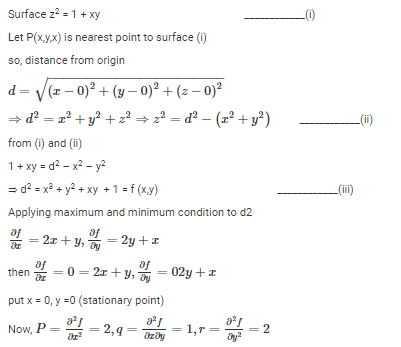
or pr – q^2 = 4 – 1 = 3 > 0 and r = +ve
so f(xy) is minimum at (0,0)
Hence, minimum value of d^2 at (0,0)
d2 = x^2 + y^2 + xy + 1 = (0)^2 + (0)^2 + (0)(0) + 1 = 1
Then the nearest point is
z^2 = 1 + xy = 1+ (0)(0) = 1
or z = 1

- a)0
- b)π/2
- c)1/5
- d)π/3
Correct answer is option 'B'. Can you explain this answer?

a)
0
b)
π/2
c)
1/5
d)
π/3

|
Akash Kumar answered |
Explain the questions
X(t) is a real valued function of a real variable with period T. Its trigonometric Fourier Series expansion contains no terms of frequency ω = 2π (2k ) /T ; k = 1, 2,.... Also, no sine terms are present. Then x(t) satisfies the equation - a)x ( t ) =−x(t − T)
- b)x (t) = −x(T − t)= −x (−t)
- c)x (t) = x(T− t) = −x (t −T / 2)
- d)x (t ) = x(t−T) = x (t −T / 2)
Correct answer is option 'D'. Can you explain this answer?
X(t) is a real valued function of a real variable with period T. Its trigonometric Fourier Series expansion contains no terms of frequency ω = 2π (2k ) /T ; k = 1, 2,.... Also, no sine terms are present. Then x(t) satisfies the equation
a)
x ( t ) =−x(t − T)
b)
x (t) = −x(T − t)= −x (−t)
c)
x (t) = x(T− t) = −x (t −T / 2)
d)
x (t ) = x(t−T) = x (t −T / 2)
|
|
Nandini Banerjee answered |
No sine terms are present.
∴x(t ) is even function.
If a continuous function f(x) does not have a root in the interval [a, b], then which one of the following statements is TRUE?- a)f(a). f(b) = 0
- b)f(a). f(b) < 0
- c)f(a). f(b) > 0
- d)f(a) / f(b) ≤ 0
Correct answer is option 'C'. Can you explain this answer?
If a continuous function f(x) does not have a root in the interval [a, b], then which one of the following statements is TRUE?
a)
f(a). f(b) = 0
b)
f(a). f(b) < 0
c)
f(a). f(b) > 0
d)
f(a) / f(b) ≤ 0
|
|
Ananya Kumari answered |
If a continuous of the present time OOO f (x)
does (a,b,c ) true is congratulations for us
f (a) . f(b) put o
does (a,b,c ) true is congratulations for us
f (a) . f(b) put o
Mathematically, the functions in Green’s theorem will be- a)Continuous derivatives
- b)Discrete derivatives
- c)Continuous partial derivatives
- d)Discrete partial derivatives
Correct answer is option 'C'. Can you explain this answer?
Mathematically, the functions in Green’s theorem will be
a)
Continuous derivatives
b)
Discrete derivatives
c)
Continuous partial derivatives
d)
Discrete partial derivatives

|
Engineers Adda answered |
The Green’s theorem states that if L and M are functions of (x,y) in an open region containing D and having continuous partial derivatives then,
∫ (F dx + G dy) = ∫∫(dG/dx – dF/dy)dx dy, with path taken anticlockwise.
∫ (F dx + G dy) = ∫∫(dG/dx – dF/dy)dx dy, with path taken anticlockwise.
The divergence theorem value for the function x2 + y2 + z2 at a distance of one unit from the origin is- a)0
- b)1
- c)2
- d)3
Correct answer is option 'D'. Can you explain this answer?
The divergence theorem value for the function x2 + y2 + z2 at a distance of one unit from the origin is
a)
0
b)
1
c)
2
d)
3
|
|
Sanya Agarwal answered |
Div (F) = 2x + 2y + 2z.
The triple integral of the divergence of the function is ∫∫∫(2x + 2y + 2z)dx dy dz, where x = 0->1, y = 0->1 and z = 0->1. On integrating,
we get 3 units.
The triple integral of the divergence of the function is ∫∫∫(2x + 2y + 2z)dx dy dz, where x = 0->1, y = 0->1 and z = 0->1. On integrating,
we get 3 units.
The voltage of a capacitor 12F with a rating of 2J energy is- a)0.57
- b)5.7
- c)57
- d)570
Correct answer is option 'A'. Can you explain this answer?
The voltage of a capacitor 12F with a rating of 2J energy is
a)
0.57
b)
5.7
c)
57
d)
570
|
|
Sanvi Kapoor answered |
We can compute the energy stored in a capacitor from Stoke’s theorem as 0.5Cv2. Thus given energy is 0.5 X 12 X v2.
We get v = 0.57 volts.
Gauss theorem uses which of the following operations?- a)Gradient
- b)Curl
- c)Divergence
- d)Laplacian
Correct answer is option 'C'. Can you explain this answer?
Gauss theorem uses which of the following operations?
a)
Gradient
b)
Curl
c)
Divergence
d)
Laplacian

|
Bibek Mukherjee answered |
Gauss's theorem, also known as Gauss's divergence theorem or Gauss's flux theorem, is a fundamental concept in vector calculus. It relates the flux of a vector field through a closed surface to the divergence of the vector field in the region enclosed by the surface. The theorem uses the operation of divergence to establish this relationship.
The divergence of a vector field is a scalar quantity that measures the rate at which the vector field "spreads out" or "converges" at a given point. It is represented by the operator ∇ · F, where ∇ is the del operator and · denotes the dot product.
The Gauss theorem states that the flux of a vector field F through a closed surface S is equal to the volume integral of the divergence of F over the region V enclosed by S. Mathematically, it can be expressed as:
∫∫S F · dA = ∫∫∫V ∇ · F dV
where ∫∫S denotes the surface integral over S, F · dA represents the dot product of F and the infinitesimal area vector dA, and ∫∫∫V is the volume integral over V.
In other words, the flux of F through S is equal to the sum of the divergences of F at each point within V, integrated over the entire volume.
The divergence theorem is a powerful tool in various fields, including fluid mechanics, electromagnetism, and heat transfer. It allows for the conversion of a surface integral, which may be difficult to evaluate, into a volume integral, which is often easier to handle mathematically.
Overall, the Gauss theorem utilizes the operation of divergence (∇ · F) to establish the relationship between the flux of a vector field through a closed surface and the divergence of the vector field within the enclosed region.
The divergence of a vector field is a scalar quantity that measures the rate at which the vector field "spreads out" or "converges" at a given point. It is represented by the operator ∇ · F, where ∇ is the del operator and · denotes the dot product.
The Gauss theorem states that the flux of a vector field F through a closed surface S is equal to the volume integral of the divergence of F over the region V enclosed by S. Mathematically, it can be expressed as:
∫∫S F · dA = ∫∫∫V ∇ · F dV
where ∫∫S denotes the surface integral over S, F · dA represents the dot product of F and the infinitesimal area vector dA, and ∫∫∫V is the volume integral over V.
In other words, the flux of F through S is equal to the sum of the divergences of F at each point within V, integrated over the entire volume.
The divergence theorem is a powerful tool in various fields, including fluid mechanics, electromagnetism, and heat transfer. It allows for the conversion of a surface integral, which may be difficult to evaluate, into a volume integral, which is often easier to handle mathematically.
Overall, the Gauss theorem utilizes the operation of divergence (∇ · F) to establish the relationship between the flux of a vector field through a closed surface and the divergence of the vector field within the enclosed region.
The directional derivative of 1/r in the direction of  is
is- a)1/r2
- b)-1/r2
- c)1/r3
- d)-
 /r3
/r3
Correct answer is option 'B'. Can you explain this answer?
The directional derivative of 1/r in the direction of  is
is
 is
isa)
1/r2
b)
-1/r2
c)
1/r3
d)
- /r3
/r3
 /r3
/r3

|
Pioneer Academy answered |
Concept:
Let f(r) be a function then directional derivative of the function f(r) is given by:

Calculation:
Given:
f(r) = 1/r
As we know that, if f(r) is a function then directional derivative of the function f(r)is given by:

f(r) = 1/r


∵ 

Here, we have to find the directional derivative of f(r) in the direction of  . It will be given by:
. It will be given by:
 . It will be given by:
. It will be given by:
Stokes theorem is used to convert __________ into _________.- a)Surface integral, Volume integral
- b)Line integral, Volume integral
- c)Line integral, Surface integral
- d)None of the above
Correct answer is option 'C'. Can you explain this answer?
Stokes theorem is used to convert __________ into _________.
a)
Surface integral, Volume integral
b)
Line integral, Volume integral
c)
Line integral, Surface integral
d)
None of the above
|
|
Sanya Agarwal answered |
Stokes theorem:
(i) Stoke's theorem enables us to transform the surface integral of the curl of the vector field A into the line integral of that vector field A over the boundary C of that surface and vice-versa. The theorem states.
(ii) The flux of the curl of a vector function A over any surface S of any shape is equal to the line integral of the vector field A over the boundary C of that surface i.e.

Stokes Theorem is given as:

It converts a line integral to a surface integral and uses the curl operation.


The area between the parabolas y2 = 4ax and x2 = 4ay is- a)

- b)

- c)

- d)

Correct answer is option 'C'. Can you explain this answer?
The area between the parabolas y2 = 4ax and x2 = 4ay is
a)

b)

c)

d)

|
|
Sanvi Kapoor answered |
y2 = 4ax & x2 = 4ay

We have to find shaded region area.
So area drawn by y= x2 / 4a on x-axis = A1 (say)
Then shaded area = |A1 – A2|
So,


⇒ 

⇒ Shaded area = 

Using Green’s theorem, the value of the integral  , where C is the square, cut from the first quadrant by the lines x = 1 and y = 1, will be.
, where C is the square, cut from the first quadrant by the lines x = 1 and y = 1, will be.- a)1
- b)1/2
- c)5/3
- d)3/2
Correct answer is option 'D'. Can you explain this answer?
Using Green’s theorem, the value of the integral  , where C is the square, cut from the first quadrant by the lines x = 1 and y = 1, will be.
, where C is the square, cut from the first quadrant by the lines x = 1 and y = 1, will be.
 , where C is the square, cut from the first quadrant by the lines x = 1 and y = 1, will be.
, where C is the square, cut from the first quadrant by the lines x = 1 and y = 1, will be.a)
1
b)
1/2
c)
5/3
d)
3/2

|
Engineers Adda answered |
Concept:
If M(x,y), N(x,y), ∂N/∂y and ∂M/∂x be continuous functions over region R bounded by a simple closed curve c in x-y plane, then according to this theorem:

It is used to simplify the vector integration.
It gives the relation between the closed line and open surface integration.
Calculation:
Given:

Comparing with the standard equation Mdx + Ndy; M = -y2 and N = xy.
∴ 



= 3/2
Stokes theorem connects - a)A line integral and a surface integral
- b)A surface integral and a volume integral
- c)A line integral and a volume integral
- d)Gradient of a function and its surface integral
Correct answer is option 'A'. Can you explain this answer?
Stokes theorem connects
a)
A line integral and a surface integral
b)
A surface integral and a volume integral
c)
A line integral and a volume integral
d)
Gradient of a function and its surface integral
|
|
Ayush Chawla answered |
Stokes' theorem connects a line integral and a surface integral.
Introduction:
Stokes' theorem is a fundamental theorem in vector calculus that relates a line integral around a closed curve to a surface integral over the region bounded by that curve. It provides a powerful tool for calculating circulations and fluxes in vector fields.
Statement of Stokes' theorem:
Stokes' theorem states that the line integral of a vector field F around a closed curve C is equal to the surface integral of the curl of F over the surface S bounded by C. Mathematically, it can be written as:
∮C F · dr = ∬S (curl F) · dS
where ∮C represents the line integral around the closed curve C, F is the vector field, dr is an infinitesimal vector along the curve C, ∬S represents the surface integral over the surface S, curl F is the curl of the vector field F, and dS is an infinitesimal vector normal to the surface S.
Explanation:
Stokes' theorem connects a line integral and a surface integral by relating the circulation of a vector field around a closed curve to the flux of its curl through the surface bounded by that curve. Here's a step-by-step explanation of how it works:
1. Consider a closed curve C in a vector field F.
2. Divide the surface bounded by the curve C into infinitesimal surface elements.
3. Calculate the curl of the vector field F at each point on the surface.
4. Take the dot product of the curl of F with the infinitesimal vector normal to the surface at each point.
5. Sum up all the dot products over the entire surface to obtain the surface integral of the curl of F.
6. Calculate the line integral of the vector field F along the closed curve C.
7. According to Stokes' theorem, the line integral is equal to the surface integral.
Significance:
Stokes' theorem provides a powerful tool for calculating the circulation of a vector field around a closed curve or the flux of its curl through a surface. It allows us to relate these two seemingly different concepts and provides a bridge between line integrals and surface integrals. This theorem has applications in various fields, including fluid dynamics, electromagnetism, and differential geometry.
Introduction:
Stokes' theorem is a fundamental theorem in vector calculus that relates a line integral around a closed curve to a surface integral over the region bounded by that curve. It provides a powerful tool for calculating circulations and fluxes in vector fields.
Statement of Stokes' theorem:
Stokes' theorem states that the line integral of a vector field F around a closed curve C is equal to the surface integral of the curl of F over the surface S bounded by C. Mathematically, it can be written as:
∮C F · dr = ∬S (curl F) · dS
where ∮C represents the line integral around the closed curve C, F is the vector field, dr is an infinitesimal vector along the curve C, ∬S represents the surface integral over the surface S, curl F is the curl of the vector field F, and dS is an infinitesimal vector normal to the surface S.
Explanation:
Stokes' theorem connects a line integral and a surface integral by relating the circulation of a vector field around a closed curve to the flux of its curl through the surface bounded by that curve. Here's a step-by-step explanation of how it works:
1. Consider a closed curve C in a vector field F.
2. Divide the surface bounded by the curve C into infinitesimal surface elements.
3. Calculate the curl of the vector field F at each point on the surface.
4. Take the dot product of the curl of F with the infinitesimal vector normal to the surface at each point.
5. Sum up all the dot products over the entire surface to obtain the surface integral of the curl of F.
6. Calculate the line integral of the vector field F along the closed curve C.
7. According to Stokes' theorem, the line integral is equal to the surface integral.
Significance:
Stokes' theorem provides a powerful tool for calculating the circulation of a vector field around a closed curve or the flux of its curl through a surface. It allows us to relate these two seemingly different concepts and provides a bridge between line integrals and surface integrals. This theorem has applications in various fields, including fluid dynamics, electromagnetism, and differential geometry.
The algebraic equation F (s ) = s5 − 3s4+ 5s3− 7s2 + 4s + 20 is given F ( s ) = 0 has - a)a single complex root with the remaining roots being real
- b)one positive real root and four complex roots, all with positive real parts
- c)one negative real root, two imaginary roots, and two roots with positive real parts
- d)once positive real root, two imaginary roots, and two roots with negative real parts
Correct answer is option 'C'. Can you explain this answer?
The algebraic equation
F (s ) = s5 − 3s4+ 5s3− 7s2 + 4s + 20 is given F ( s ) = 0 has
a)
a single complex root with the remaining roots being real
b)
one positive real root and four complex roots, all with positive real parts
c)
one negative real root, two imaginary roots, and two roots with positive real parts
d)
once positive real root, two imaginary roots, and two roots with negative real parts

|
Raghavendra Sengupta answered |
we can solve it by making Routh Hurwitz array.
We can replace 1st element of s1 by 10.
If we observe the 1st column, sign is changing two times.
So we have two poles on right half side of imaginary
Axis and 5s2+20=0
So, s =±2j and1 pole on left side of imaginary axis .
The value of the integral  , where D is the shaded triangular region shown in the diagram, is _____ (rounded off to the nearest integer).
, where D is the shaded triangular region shown in the diagram, is _____ (rounded off to the nearest integer).
Correct answer is '512'. Can you explain this answer?
The value of the integral  , where D is the shaded triangular region shown in the diagram, is _____ (rounded off to the nearest integer).
, where D is the shaded triangular region shown in the diagram, is _____ (rounded off to the nearest integer).
 , where D is the shaded triangular region shown in the diagram, is _____ (rounded off to the nearest integer).
, where D is the shaded triangular region shown in the diagram, is _____ (rounded off to the nearest integer).
|
|
Sanya Agarwal answered |
Calculation:
To cover shaded region
x → 0 to 4
y → -x to x
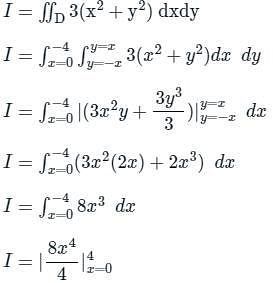
I = 2× 44 = 512
The minimum value of the function f(x) = x3-3x2 - 24x + 100 in the interval [-3, 3] is- a)20
- b)28
- c)16
- d)32
Correct answer is option 'B'. Can you explain this answer?
The minimum value of the function f(x) = x3-3x2 - 24x + 100 in the interval [-3, 3] is
a)
20
b)
28
c)
16
d)
32
|
|
Priyanka Bose answered |
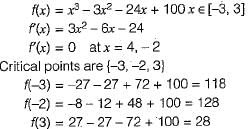
Hence f(x) has minimum value at x = 3 which is 28.
Chapter doubts & questions for Calculus - Engineering Mathematics 2025 is part of Civil Engineering (CE) exam preparation. The chapters have been prepared according to the Civil Engineering (CE) exam syllabus. The Chapter doubts & questions, notes, tests & MCQs are made for Civil Engineering (CE) 2025 Exam. Find important definitions, questions, notes, meanings, examples, exercises, MCQs and online tests here.
Chapter doubts & questions of Calculus - Engineering Mathematics in English & Hindi are available as part of Civil Engineering (CE) exam.
Download more important topics, notes, lectures and mock test series for Civil Engineering (CE) Exam by signing up for free.
Engineering Mathematics
65 videos|122 docs|94 tests
|
Signup to see your scores go up within 7 days!
Study with 1000+ FREE Docs, Videos & Tests
10M+ students study on EduRev

Contact Support
Our team is online on weekdays between 10 AM - 7 PM
Typical reply within 3 hours
|
Free Exam Preparation
at your Fingertips!
Access Free Study Material - Test Series, Structured Courses, Free Videos & Study Notes and Prepare for Your Exam With Ease

 Join the 10M+ students on EduRev
Join the 10M+ students on EduRev
|

|
Forgot Password
OR
Signup to see your scores
go up within 7 days!
Access 1000+ FREE Docs, Videos and Tests
Takes less than 10 seconds to signup


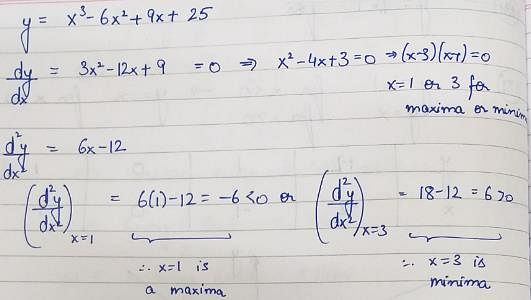


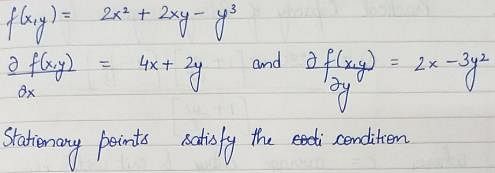


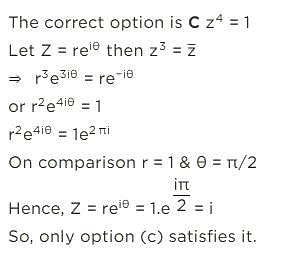
 , where R is the region shown in the figure and c = 6 × 10-4. The value of I equals________. (Give the answer up to two decimal places.)
, where R is the region shown in the figure and c = 6 × 10-4. The value of I equals________. (Give the answer up to two decimal places.)











